



Tamlyn Currin
15 Feb 2021
Project Loire – Chenin Blanc
See this guide to the other instalments in this broad look at current o4erings from the Loire Valley. Reds, pinks, sweets and sparklings still to come.
Part three of Project Loire was, unashamedly, my favourite tasting. Chenin is such a beautiful grape. I was even worried about the high percentage of generous scores. This set of tasting notes also turned out to be the hardest one to write an introduction to – in many ways, the wines speak for themselves.
Chenin country, in the Loire, begins on the border of Pays Nantais and Anjou-Saumur. Chenin owns the heart of the Loire Valley, only petering out where Touraine meets Central Loire on the borders of Cheverny. Over a crow-Lies distance of about 160 km (100 miles), this Jekyll-Hyde grape riffs from green to gold, from sandpaper dry to syrupy sweet, from chiffon lightness to brocatelle weight. It’s a variety that takes bubbles, tank or oak (old and new), ageing, malo or no malo, lees or no lees, spontaneous fermentation or conventional inoculation. Where Chardonnay is the blank canvas on which terroir and winemaking are painted, Chenin is the sculptor’s grape – able to take shape with every tool the winemaker might choose to use, or not. But unlike Chardonnay and like clay or stone or wood, Chenin is never blank in herself. Chenin shows. You can slap it with a pantomime’s worth of winemaking maquillage and you will still recognise Chenin.
In the Taille aux Loups, Rémus wine of the week, I described it as ‘phenomenally food- loving’, and it is this combination of high acidity, generous fruit and mouthfeel (in the good ones) that makes so many of these Loire Chenins brilliant with food. Chenin, in at least one of its configurations, will go with almost any kind of food you could think of. If you doubt me, try a steak topped with garlicky butter and sweet-potato mash and a sip of one of the richer, oaked Vouvray Secs.
Chenin, you see, as a food-pairing wine, is the ultimate negotiator, the networker. It doesn’t need to match perfectly with one ingredient – although often it does – but Chenin’s strength is a plate of food. Chenin likes complexity, the jostling of flavours on a plate, whether it’s the ordinariness of the dinner table on which an oozingly cheesy-rich lasagne might sit alongside a vinaigrette-dressed rocket-leaf salad and garlic bread, or an Indian thali where there is a kaleidoscope of sweet-sour-bitter-salty-astringent-spicy flavours.
Chenin works when you’ve got six people around a restaurant table and everyone has ordered something a little different. Chenin works for a buffet. Chenin threads people and food together, bridging flavours and textures, ameliorating spices, highlighting the quiet flavours, melting the strident ones. It pulls the ingredients on a plate together, plates on a table together, courses in a dinner together. Chenin can make Eastern spices talk to Western sweetness. Chenin can make the most stubbornly oppositional flavours work.
While South Africa continues to produce outstanding Chenin, it’s vitally important that we don’t forget its home. The first historical record of Chenin in the Loire goes back to 845 AD, in Anjou. It’s heritage shows in the many parcels of old vines. I noticed that among these 57 Chenins, a high proportion of the wines come from vines 40 years and older.
As British wine writer and Loire specialist Jim Budd affirmed during a recent online tasting, in the last 30 years the quality of Loire Chenin has been on an inexorable rise. He made two interesting comments. One was that while appellations such as Vouvray have always been recognised for their great Chenins, it’s good to see regions such as Anjou placing less importance on their slightly sweet rosés and focusing on high-quality Chenin. The second was that some of the leading producers in St-Nicolas de Bourgueil are planting Chenin! The wines will have to be IGP, but they’re so convinced by the potential for Chenin Blanc that they’re prepared to take that risk.
There are outstanding producers making breathtakingly beautiful Chenins right now, and it might do us Brits well to remember, as we try to curb our flying footprints, the Loire Valley is right on our doorstep.
Producers who I think are doing some pretty special stuff include (in alphabetical order):
Dom des Aubuisières
Dom Belargus
Bonnigal-Bodet
Cady
Le Clos Galerie
Le Clos de la MeslerieDom du Closel
Dom Filliatreau, Ch Fouquet Les Grandes Vignes
Dom Beatrice et Pascal Lambert Damien Laureau
Frédéric Mabileau
Dom de Nerleux
Dom d’Orfeuilles
Dom du Petit Métris
Dom du Petit Trésor
François et Julien Pinon Pithon-Paillé
Dom de Rocheville
Dom de la Taille aux Loups
After I wrote this list, I went back and checked: out of these 20 producers, only three are not certified organic. Six of them are certified biodynamic as well. In fact, out of the 57 wines reviewed below, 36 are certified organic (or in conversion to certification), nine are certified biodynamic, and eight are certified Haute Valeur Environnementale. Perhaps this small selection is not representative, but it does look, at a cursory glance, as if Chenin producers may be particularly concerned about the environment.
Le Clos de la Meslerie, Sec 2017 Vouvray 17.5 +
Certified Ecocert organic. Made by Peter Hahn. 60-year-old Chenin vines on clay and flint. Hand-picked. Fermented and aged on lees for 12 months in old barrels. No malo. RS 6 g/l.
Now this wine has an exciting nose! The back of my neck tingled. Wines like this drag me into the otherworld of synesthesia and I probably should issue an apology and a warning note upfront to those who have their senses and brain connected firmly in all the right places. But if it were possible to smell, or taste, the swirl of copper and bronze pressed into cherry wood, quince petrified into bornite, the coppery glow of bracken in late autumn, a bright new penny dipped in marmalade liqueur (without even a molecule of sweetness), sunset on black rocks, spindle berries … then that’s this wine. Practically speaking, it is dry, elegant, determined, long, toasty and has notes of bitter orange, quince, spice. None of this really matters. It is a stunner. Drink with reverence. (TC) 13.5%
Drink 2021 – 2030
Imported into EU and UK

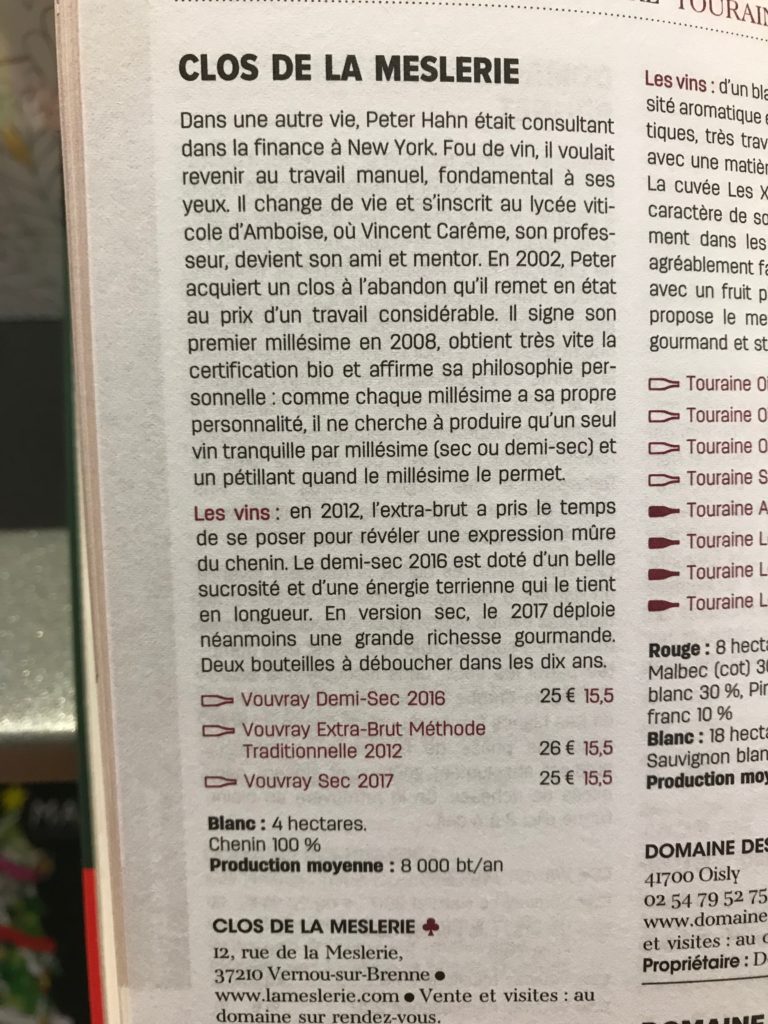
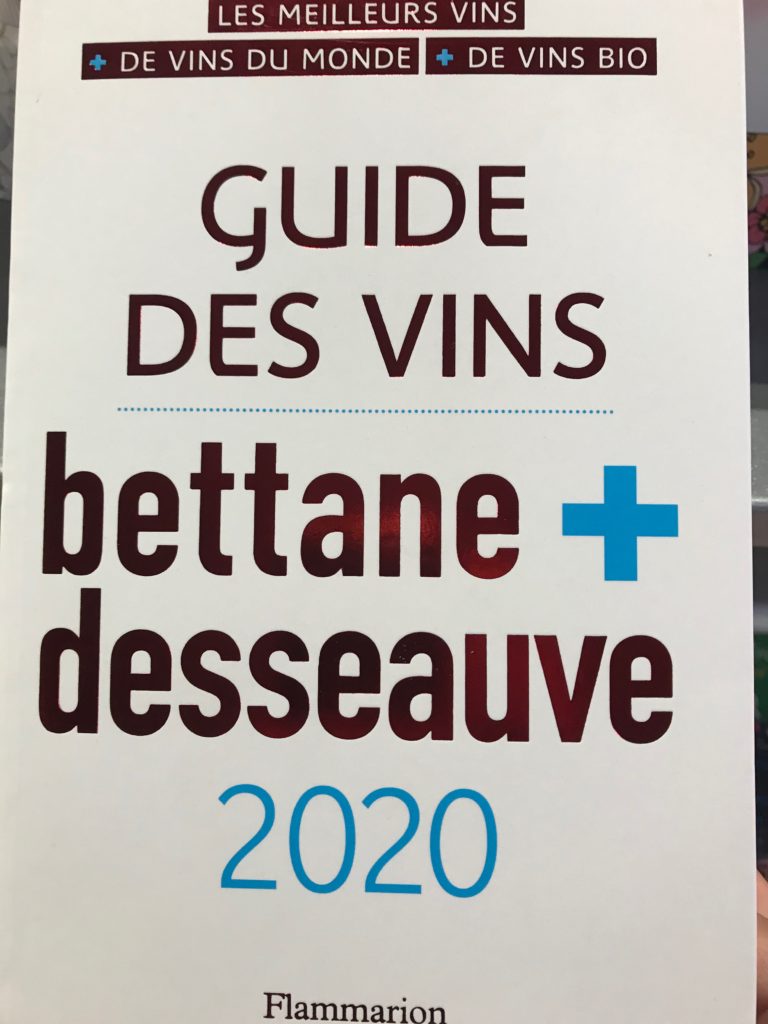
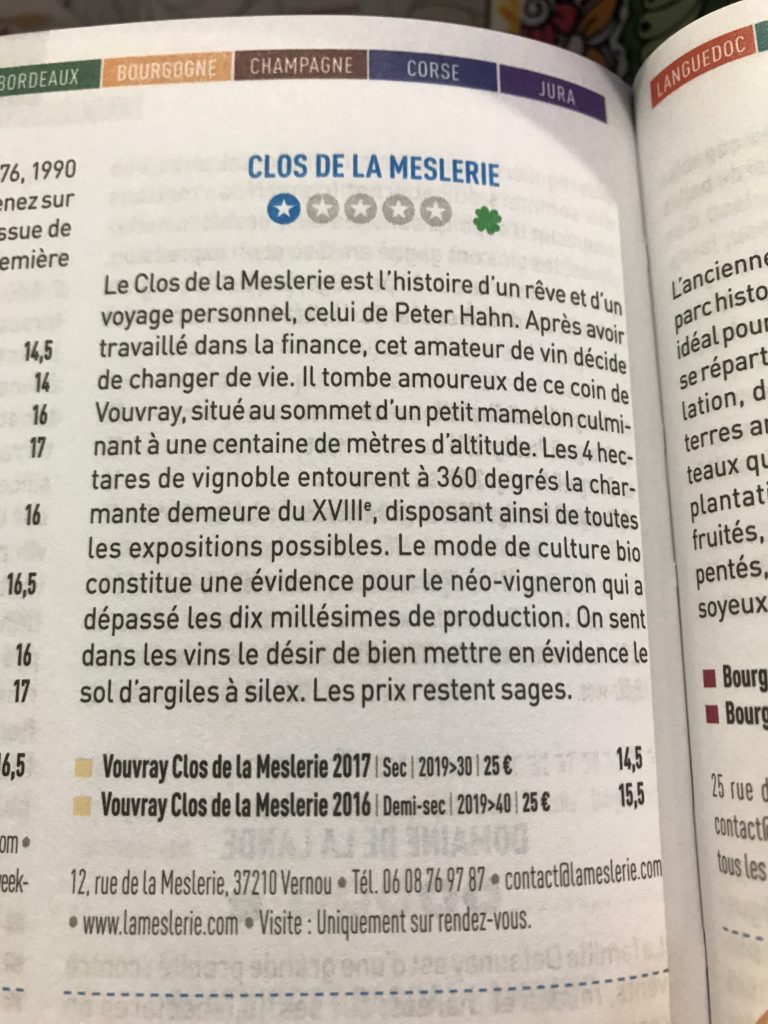
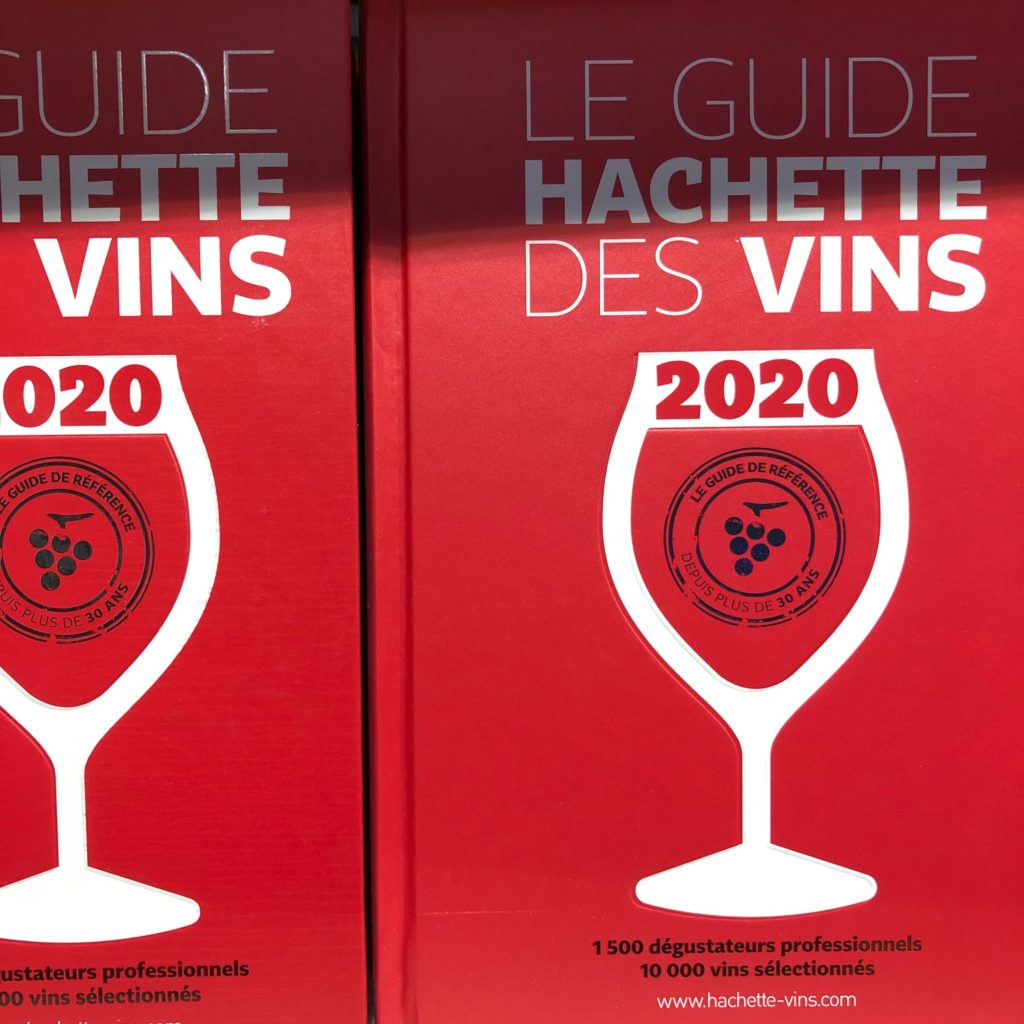
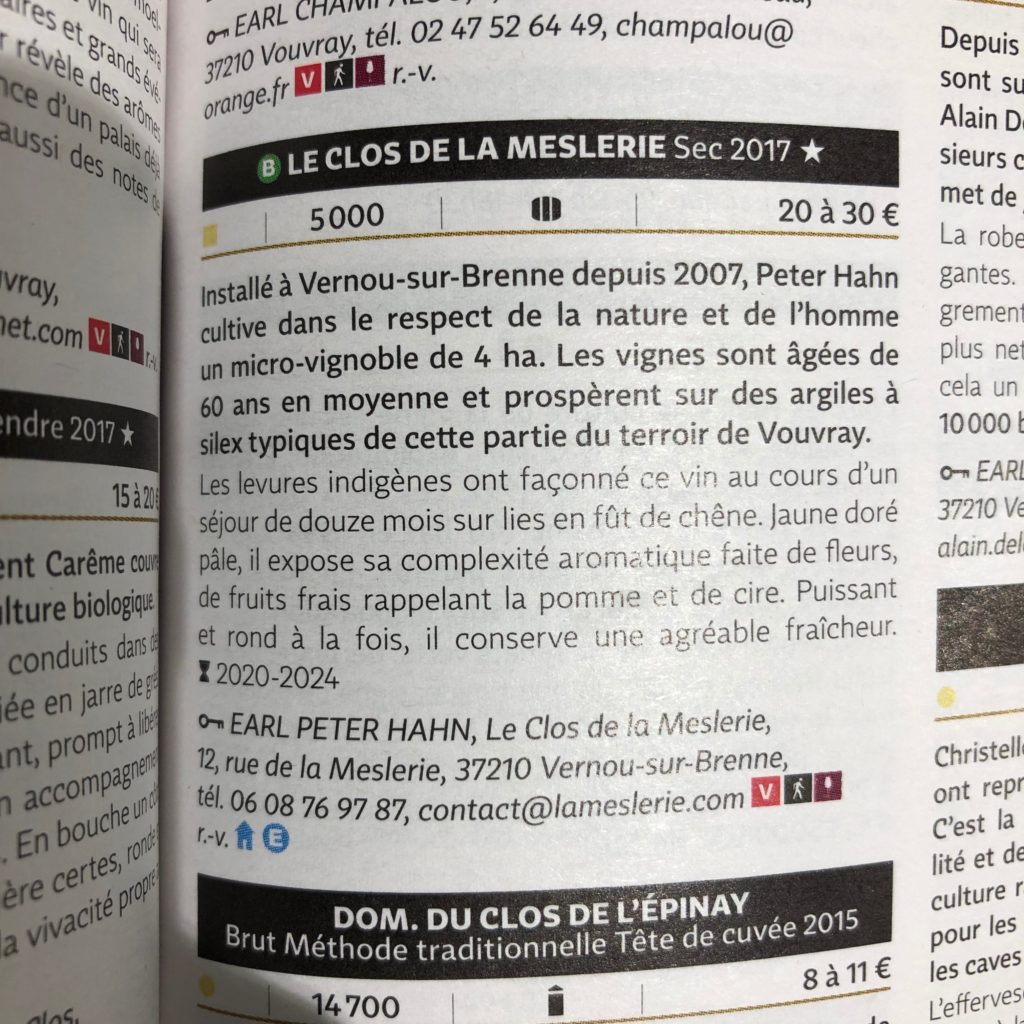

Le 22 février 2017, Des Racines & Des Ailes diffuse son reportage En remontant la Loire, avec quatre minutes consacrées au Clos de la Meslerie et à son vin. On parle de comment est traitée la vigne tout au long de l’année: « -Ça prend beaucoup de temps. (…) C’est qualitatif. On veut peu de raisin, mais de qualité. Tout se passe dans les vignes. » , le tout complété par des plans aériens au drone.
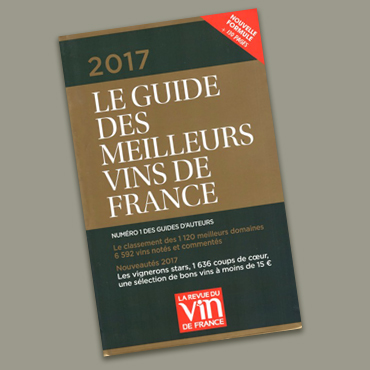
» Dans une autre vie, Peter Hahn était consultant dans la finance à New York. Fou de vin il veut revenir au travail manuel, fondamental à ses yeux. Il change de vie et s’inscrit au lycée viticole d’Amboise, où Vincent Carême, son professeur, devient son ami et mentor. En 2002, Peter acquiert les 4 hectares d’un clos à l’abandon, qu’il remet en état au prix d’un travail considérable. Il signe son premier millésime en 2008, obtient très vite la certification bio, et affirme sa philosophie personnelle : comme chaque millésime a sa propre personnalité, il cherche à produire qu’un seul vin tranquille par millésime (sec ou demi-sec), et un vin pétillant quand le millésime le permet. Ce vigneron de talent, qui contribue au renouveau du paysage vouvrillon, entre cette année dans notre nouveau guide.
Les vins : très élégant dans ses notes de fleurs blanches et d’acacia, le Méthode Traditionnelle brut 2013 a passé 12 mois sur lattes. Sa bulle évanescente est au service d’une matière suave et fraîche, sans aspérité : un vin soigné, persistant, complet. Empreint de légères notes de fruits jaunes (abricot), le sec et dens Vouvrai 2013 est porté par une bonne acidité, et son volume est très satisfaisant pour le millésime. À boire dès maintenant. »
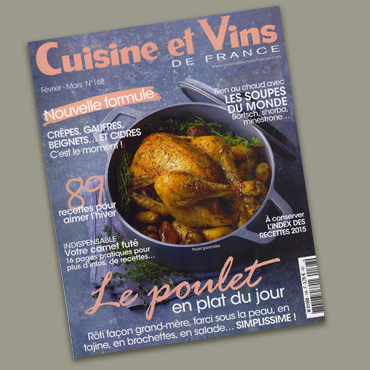
« Vouvray 2011
Le Clos de la Meslerie
Il ne faut pas se fier à la couleur dorée presque topaze du vin de Peter Hahn. Même s’il contient une pointe de sucre résiduel, ce blanc est d’une fraîcheur remarquable, posé sur une bouche à la minéralité intense. Bien boisé, il finit sur des notes de tatin qui signent un élevage et un oxydatif maîtrisés surce micro-domaine en agriculture biologique produisant un vin artisanal. […]
Comment le boire : la rondeur de sa bouche et la vivacité de sa texture en font un vin de fête, à placer indifféremment sur du foie gras, une volaille, du poisson ou des fromages. »